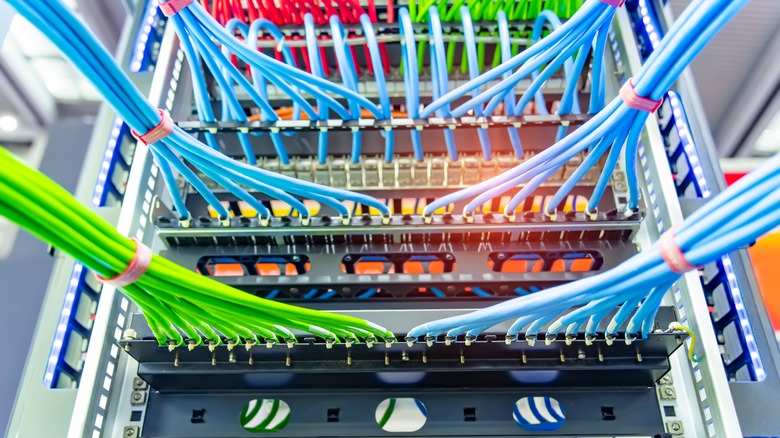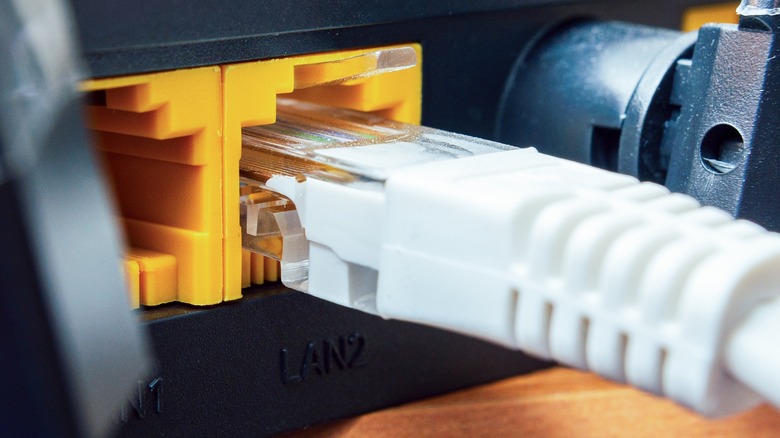What Is A Network Jitter And How Is It Different From Ping?
When you run an internet speed test on your device, you generally get three different measurements regardless of which specific test you use. The big one that most people focus on is the actual data throughput that's generally used to measure internet speed. Like the speed at which your broadband connection is rated, that throughput is generally measured in megabits or, when applicable, gigabits per second. For most people, that's probably going to answer whatever questions they have about their internet performance, without a need to get more granular.
However, when you run a speed test, you may also notice some other measurements, like "ping" and "jitter" in milliseconds, latency, and packet loss percentage. That last one is pretty self-explanatory, as it measures what percentage of packets – small chunks of data – sent across the network during the test that fail to arrive at their destination. Latency is something that, if you're at all technically inclined, you've probably heard in some form as a measurement of delay in data transmission, like with input latency in gaming. "Ping" and "jitter," though, are specialized jargon, and if you've never heard of them before, most speed tests don't clearly explain what they are or how they differ from each other. Let's take a look at exactly what they are and how they relate not just to each other, but also the how they impact the latency of your connection.
What is jitter?
Though used most commonly in a networking context, jitter is not limited to networking, and is an issue that can apply to any kind of digital data stream. Broadly speaking, jitter refers to unwanted fluctuations in the timing of a digital signal. In networking, jitter is, more specifically, a deviation from the expected response time. These delays can be caused by everything from faulty hardware to poor packet prioritization and network congestion, resulting in problems like droputs on video calls, and synchronization issues.
Exactly what level of network jitter is acceptable depends on what you're doing and how tolerant that application is of jitter. For basic, one-way data transfer, like file downloads and streaming video content, you should be able to get away with the jitter of up to 100 milliseconds. For video chats, online gaming, and voice calls, you should be fine with 30 milliseconds or less of jitter, although there's some headroom up to 50 milliseconds for video calls. You get the idea: The more important timing is to an internet-based activity, the more disruptive deviations from that timing are to that activity.
Outside of networking, the area where digital jitter probably comes up the most is with digital audio. In audio, jitter manifests as timing errors that deviate from the internal clock of a analog to digital or digital to analog converter. Absent good error correction, jitter can manifest as audible artifacts in digital audio recording or playback.
How is network jitter different from ping?
Ping, meanwhile, can be explained pretty succinctly: A ping is when packet is sent across the internet to a destination server and then completes a return trip back to the computer that initiated the process. The lower the ping time, the better. This is intertwined with latency, which is the measurement of how long one of the one-way trips takes without factoring in the return trip.
The way that jitter relates to ping is that jitter, particularly in speed tests, measures the variance in the attempted ping times. Basically, it's accounting for delays beyond the norm. With ping, latency, and jitter times, the lower the number, the better. It's important to note that these measurements reflect the quality of an internet connection, and should not confused with data throughput. You might be able to get better throughput over a cellular connection than you would over DSL — comparable to that of cable or fiber connections — but when it comes to the measurements of connection quality, DSL is going to come closer to cable and fiber, and ahead of the ISPs that beam the internet into your home.


